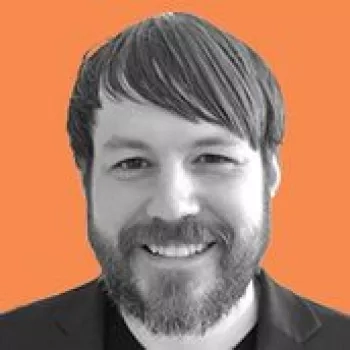
Pathologists can Help Cancer Patients Better Understand their Disease Both in Real Life and Online – Here’s How
Pathologists are often an untapped resource of knowledge about cancer that could help patients and family members understand the disease they are fighting. Engaging online and on social media can make a real difference – to patient and pathologist alike.
Dr. Gardner

Most people reading this blog will know from personal experience how devastating a cancer diagnosis can be – most of us know someone who has been through it, and this could be a close friend, family member, or even ourselves. For people with a recent diagnosis, or even for people who have been living with a diagnosis for some time, cancer raises a lot of questions. Will the cancer recur or spread? Why did I get this cancer…? Did I do something to cause it? If the cancer is caused by a gene problem, won’t my children have a higher risk for getting it, too? Will I survive this? Anxiety and worry about these unanswered questions is the last thing a cancer patient needs on top of the physical challenges of dealing with cancer and the side effects of treatment. When patients get legitimate reliable answers to their questions, it can give them a sense of empowerment and may even reduce their disease-related anxiety.1 Knowledge is power.
Obviously, the patient’s surgeon, oncologist, or other treating physician plays a critical role here. But pathologists can also help. We may not be experts at treatment or therapy, but we are experts at cancer diagnosis. We spend endless hours examining cancer microscopically, reading about it, thinking about it, studying it, and writing about it in our pathology reports. We know what cancer looks like down to the individual cells, and we understand it conceptually even beyond what the human eye can see… down to the level of proteins, RNA, and DNA. We can explain the gene fusions, mutations, and amplifications that cause many types of cancer and also explain the laboratory techniques that we use to detect these molecular abnormalities. We speak the language of pathology, a language that is foreign to the general public and sometimes even to our non-pathologist colleagues.
I believe pathologists are an often unrecognized and untapped resource of cancer knowledge that could be enormously helpful to patients and family members in better understanding the disease that they are struggling with. As much of our work is done from behind the scenes in the laboratory, patients, and even many of our non-pathologist colleagues, may not realize that we are available to answer questions, explain terminology and laboratory techniques used for diagnosis, and provide general education to patients about their cancer. We can engage our own patients face-to-face in the hospital setting or the larger community of patients in the online space via social media. I’ve done both, and let me tell you, the experience has truly changed my life.
Aside from cytopathologists who perform fine-needle aspiration biopsies on patients, most other anatomic pathologists rarely interact face-to-face with their own patients. Patients often do not realize that it is a pathologist, a medical doctor trained in the diagnosis of cancer and other diseases, who makes their diagnosis of cancer. In a large survey study of rare tumor patients and family members, over 25% of respondents thought (incorrectly) that their oncologist made the final diagnosis of cancer.1
Even though my telephone number is on all of my pathology reports, only rarely do patients actually call me directly to ask me questions. However, there is a growing interest in ‘patient-centered pathology’ wherein pathologists make themselves available to meet with patients, show them their cancer under the microscope, and explain the disease in more detail and how we as pathologists make the diagnosis.2 A recent publication on this concept by Booth and colleagues found that a majority of patients felt empowered by this experience.3 I recently participated in one of these consultation sessions with one of my patients. I met with a young woman who I had previously diagnosed with a very rare form of sarcoma, a cancer of soft tissues. I showed her what her tumor looked like microscopically (on a computer screen, using a scanned digital whole slide image), explained how I was able to distinguish her tumor from other types of tumors that might mimic it, and answered questions about how and why this cancer occurs. I even gave the patient a glass slide recut of her own tumor to take home and keep, which she thought was really cool. When viewing the microscopic images of her tumor, she asked me "can I make this into wallpaper?" I told her "it is your tumor… You can do what you want with it!" I think the patient and I both gained a lot from the experience. This much information may not be for every patient, but for some, I believe that visualizing their tumor with their own eyes and discussing it with the pathologist who diagnosed it can bring both empowerment and peace of mind. And for me, as a pathologist, it is a poignant reminder of how meaningful the work I do every day can be.
Pathologists can also help educate patients online via social media. Since 2014, I have been volunteering in a variety of sarcoma and other rare disease-focused Facebook patient support groups.4 These groups were all founded by patients to support and educate each other; I am merely there as a volunteer. As these are not my patients and I am not their doctor, I cannot provide official medical advice. But I can provide legitimate general knowledge about the disease, explain medical terminology, and help members of the group better understand the questions they need to be asking their own doctors. Some people have asked me "isn’t that the job of their own doctors?" Yes, of course it is. But sometimes even experienced doctors do not have in-depth answers to questions about the rare diseases I see in my practice. The short time allotted for a doctor's appointment may not allow the patient to ask every question of their treating doctor. And some patients may not have access to a specialist who has experience with their particular disease, either because of financial issues or geographic location.
I distinctly remember a mother whose child had synovial sarcoma explaining how their doctor had told them that it would be too expensive to perform genetic testing on her other children to see if they also had a risk of developing synovial sarcoma. I explained to her that the genetic problem that caused this type of sarcoma was not an inherited one and that her other children did not have any higher risk of developing that cancer than me or any other random person. I’ll never forget what she said next: “thank you, that makes perfect sense for the first time in 9 years!!! I always worried that we never tested my other kids, you've put my mind at rest.” I cannot imagine how much guilt that mother carried with her for almost a decade because of misinformation given to her by a (probably well-intentioned) doctor who just did not have experience with that very rare tumor. This mother told me that in her country, there were no specialists who had experience in this form of sarcoma. It took me less than 5 minutes to answer that question and put her mind at ease.
When pathologists volunteer a little bit of time and knowledge in Facebook patient support groups, it can make a huge positive impact. Patients in these groups overwhelmingly support the idea of having pathologists (and other doctors) volunteer in their groups to provide knowledge and vetted information to patients about their diseases. In one study, 98% of patients and family members responding to a survey agreed that “having a pathologist in their group was a good thing.”1
I joined these groups to help teach patients, but I believe that in the end the patients taught me much more than I taught them. They have actually taught me a lot medically from their own cases, things that I did not previously know, even though I am an expert in these tumors. I’ve partnered with patient members of these groups to conduct formal medical research studies about the patients’ own tumor type (a patient was the one to suggest this idea, and several patients were official co-authors with me on the final published paper!)4
The patients have also taught me a lot about finding meaning and value in life, about finding joy in the midst of suffering, and about reframing my perspective when challenges arise. Working with these patient groups has truly changed my life and positively impacted me in so many ways.5
I actually believe engaging in patient groups on social media has been a significant protective factor against me developing burnout in my own career. In February 2020, I had the great privilege of giving a TED talk about my experiences working with rare cancer Facebook patient support groups at the TEDxUAMS event – available on the TED website.
I think every pathologist should find a Facebook patient support group, join it, and introduce themselves by saying “Hi, I’m a pathologist. I would love to help answer any questions you have about your disease, but I would also love to learn from you so that I can be an even better doctor for my future patients.” Pathologists and other doctors teaming up with patients in support groups like these could change the future of medicine, especially for patients with rare disease. All it takes is a bit of time and a willingness to step outside the traditional boundaries that have boxed our specialty in for so many years. I think it’s time for pathologists to shake things up a bit!
Follow #TheFutureOfPathology on Twitter, Facebook or LinkedIn.
About the presenter

Dr. Jerad M. Gardner, Associate Professor of Pathology and Dermatology, Dermatopathology Fellowship Program Director and Co-director, Musculoskeletal/Skin Module at the College of Medicine, University of Arkansas for Medical Sciences (UAMS), Little Rock, AR, USA
References
1. Haller J, David MP, Lee NE, Shalin SC, Gardner JM. Impact of Pathologist Involvement in Sarcoma and Rare Tumor Patient Support Groups on Facebook: A Survey of 542 Patients and Family Members. Arch Pathol Lab Med. 2018 Sep;142(9):1113-1119.
2. Jug R, Booth AL, Cummings TJ, Gardner JM, Joseph L. Patient centered pathology (PCP). PathologyOutlines.com website. http://www.pathologyoutlines.com/topic/managementlabpcp.html Accessed 9 June 2020.
3. Booth AL, Katz MS, Misialek MJ et al. ‘‘Please Help Me See the Dragon I Am Slaying’’. Arch Pathol Lab Med 2019;143:852–858.
4. David MP, Funderburg A, Selig JP, Brown R, Caliskan PM, Cove L, Dicker G, Hoffman L, Horne T, Gardner JM. Perspectives of patients with dermatofibrosarcoma protuberans on diagnostic delays, surgical outcomes, and nonprotuberance. JAMA Netw Open. 2019 Aug 2;2(8):e1910413.
5. Gardner JM. How angiosarcoma and Facebook changed my life. Arch Pathol Lab Med. 2017 Feb; 141(2):188-188.
Leica Biosystems Knowledge Pathway content is subject to the Leica Biosystems website terms of use, available at: Legal Notice. The content, including webinars, training presentations and related materials is intended to provide general information regarding particular subjects of interest to health care professionals and is not intended to be, and should not be construed as, medical, regulatory or legal advice. The views and opinions expressed in any third-party content reflect the personal views and opinions of the speaker(s)/author(s) and do not necessarily represent or reflect the views or opinions of Leica Biosystems, its employees or agents. Any links contained in the content which provides access to third party resources or content is provided for convenience only.
For the use of any product, the applicable product documentation, including information guides, inserts and operation manuals should be consulted.
Copyright © 2024 Leica Biosystems division of Leica Microsystems, Inc. and its Leica Biosystems affiliates. All rights reserved. LEICA and the Leica Logo are registered trademarks of Leica Microsystems IR GmbH.